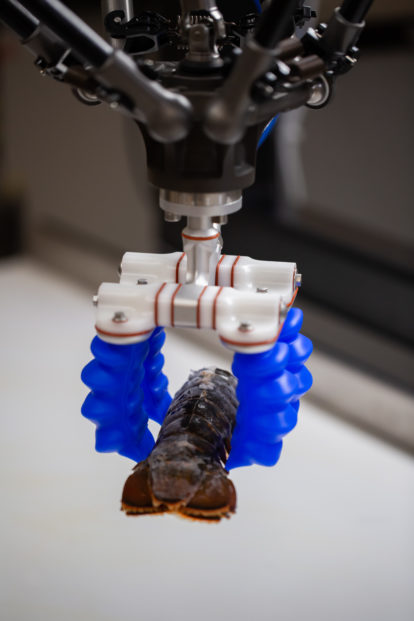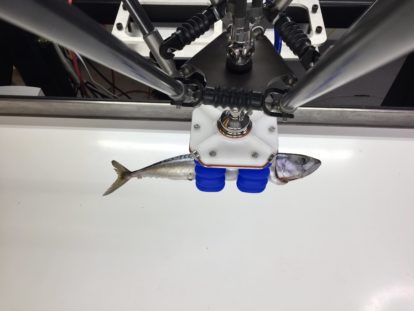
New England is best known for its seafood, especially shellfish like scallops, oysters, and lobsters. Most of the fishing is done locally but much of the processing is actually outsourced to other countries. This means that because of the harsh work conditions and lack of skilled workers, your lobster that was caught in Massachusetts may have traveled overseas before appearing at your local restaurant. Talk about well-traveled.
 The lack of qualified labor combined with the harsh work environment in the seafood industry compounds the difficulty in processing seafood. Floors are wet and slushy from the ice and are often kept cold to keep fish fresh. Job duties include scraping, cutting, gutting, washing, and cleaning to prepare for canning, freezing, and packing. These tasks are dangerous and require both skilled and unskilled workers to complete them making it difficult to fulfill jobs under these undesirable conditions – thus the need to pack up and ship your lobster overseas to get it packed. This line of work falls under the dull, dirty, and dangerous jobs manufacturers have a hard time filling. The goal is to increase efficiency, decrease the risk of injury and ultimately, keep jobs local. By doing this, more fish can be processed locally thus generating more jobs and importing less. Labor cost is the most costly component, followed by general manufacturing costs, processing then packaging. Between finding the right labor, training, turnover, and retraining, this industry faces costly labor challenges. The good news is that robotic automation is changing the way these jobs get done – decreasing the risk of injury and allowing human workers to focus on more fulfilling jobs.
The lack of qualified labor combined with the harsh work environment in the seafood industry compounds the difficulty in processing seafood. Floors are wet and slushy from the ice and are often kept cold to keep fish fresh. Job duties include scraping, cutting, gutting, washing, and cleaning to prepare for canning, freezing, and packing. These tasks are dangerous and require both skilled and unskilled workers to complete them making it difficult to fulfill jobs under these undesirable conditions – thus the need to pack up and ship your lobster overseas to get it packed. This line of work falls under the dull, dirty, and dangerous jobs manufacturers have a hard time filling. The goal is to increase efficiency, decrease the risk of injury and ultimately, keep jobs local. By doing this, more fish can be processed locally thus generating more jobs and importing less. Labor cost is the most costly component, followed by general manufacturing costs, processing then packaging. Between finding the right labor, training, turnover, and retraining, this industry faces costly labor challenges. The good news is that robotic automation is changing the way these jobs get done – decreasing the risk of injury and allowing human workers to focus on more fulfilling jobs.
Robotic automation is enabling flexible manufacturing in the food industry to increase productivity, product quality, and more importantly, food safety. The seafood industry, in particular, has had minimal automation compared to other sectors, due to the delicate, amorphous nature of the products. However, the challenge of handling amorphous and delicate objects can quickly be solved with the right end-of-arm tool (EOAT). Through automation, you can increase productivity and get your products to market faster as the labor shortage continues to grow.

Our gripper technology, mGrip allows for safe food handling and is adaptable enough to handle the variability of different shapes, sizes, and weights. The mGrip adaptable gripper is made of soft components, ensuring the delicate, yet secure handling of products ranging from lobsters (even live ones!), to frozen scallops and even breaded fish sticks. When it comes to ensuring food safety, we have designed a grasping solution with food-safety top of mind. Sanitation is a top priority for food producers with machine cleanability being the greatest challenge to prevent contamination. Our solution is IP69-K rated – the highest rank on the Ingress Protection (IP) rating scale. Safety regulations demand tools that are easy to disassemble in order to minimize cross-contamination and recalls. We’ve solved this with ingress protected grippers running on a pneumatic system which means internal places won’t get clogged. Our food-grade grippers are easy to build, can be modified and adapted quickly, and are designed to keep up with the speed of any industrial robot when paired with a Soft Robotics Control Unit.
The goal for food processing and handling is to be able to design and execute a solution that will ensure the safety, quality, and integrity of the product that reaches the consumer. Soft Robotics has done this successfully for a customer handling both fresh and frozen fish using a Soft Robotics mGrip solution. The adaptable fingers are able to grasp between fresh and frozen fish eliminating any concerns of handling variability. With a pneumatic system, this allowed less downtime for cleaning and a more reliable way to handle fish. With a Soft Robotics mGrip solution, we can now automate repetitive tasks in industries that haven’t been able to be automated.